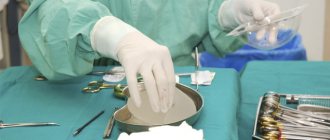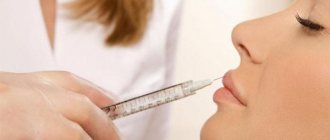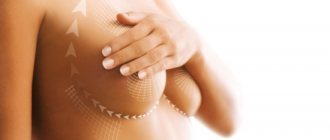Types of implants
Having understood how mammoplasty works, and having made sure that it is safe when using the services of an experienced medical team, the girl begins to choose an implant.
There are several classifications for such breast “helpers”. First, they are divided by shape into:
- round;
- anatomical.
The first ones were in demand twenty years ago, and today teardrop-shaped versions, which are called anatomical analogues, are breaking popularity records. There is also a separate sorting according to the material:
- silicone gel;
- saline;
- biocompatible gel.
Silicone gel, despite its name, is not a flowable material. He is able to “remember” the desired shape. Many people like it because even if the outer shell ruptures, it continues to hold its shape without the risk that the contents of the “medical bag” will spread throughout the body. Such variations are safe for the mammary glands, as confirmed by numerous scientific studies. It’s not for nothing that manufacturers issue a lifetime warranty on their product regarding shell rupture issues.
Saline solutions, which contain saline solution inside, are liked by women for their ability to reduce the incision during surgery. The saline filler is injected internally after implantation, which avoids the unpleasant complications associated with silicone alternatives.
But here you should prepare for the fact that after a while mammoplasty will have to be performed again. This is explained by the fact that inserts with saline solution thin the skin much more, stretching it. And against the background of diffusion of the composition through the implant shell, which guarantees a gradual loss of shape, patients often prefer the innovative gel.
The latest technology in plastic surgery of this medium is usually called a filler in the form of carboxymethylcellulose. This biogel is positioned as a natural polymer. If the shell does rupture, then the contents of the “bag” will simply be processed by the body, decomposing into completely safe for internal organs:
- water;
- glucose;
- carbon dioxide.
The final type of classification is sorting according to surface. It covers the division into:
- smooth;
- textured.
The tested proposal almost always affects exclusively the anatomical forms of the future insertion. The reason for this is the improvement in the quality of adaptation in the tissue cavity, which reduces the risk of axis twisting when exposed to external negative factors.
Over time, a fibrous capsule forms around the implant, which is a normal reaction of the body to the introduction of a foreign body into the soft tissue.
Such progress only indicates the positive dynamics of the rehabilitation course.
In clinical practice, cases have been recorded when the capsule becomes too dense, which provokes excessive pressure on the insert, guaranteeing deformation of the contour. This deviation is called capsular contracture.
This usually happens if a woman chooses an implant with a smooth surface, since a textured shell significantly reduces the likelihood of developing such an unsightly side effect.
It’s even easier if the shell is made of a polyurethane composition. It is this technique that reduces the risk of forming a rough capsule to almost zero.
Technique
Schematically, all stages of mammoplasty, regardless of its class, can be divided into three stages, not counting the preliminary consultation. There, the surgeon will definitely talk about the features of the intervention, the planned results, possible complications or consequences.
The three main stages of implementation cover:
- preparation;
- sterilization;
- skin incision with implant insertion.
Tests before manipulation necessarily include a visit to a mammologist. The results of his examination will allow the surgeon to determine the shape of the skin incision.
Many people are interested in how long the intervention lasts. It all depends on various factors, but usually the medical staff manages to fit in within 2-3 hours. First, the patient is given anesthesia, treating the instruments and skin with an antiseptic. And then the fabric is cut in the previously designated places. This is how you get a pocket that is designed to place the insert there.
Having determined the location of the vessels, the doctor stops the resulting bleeding, after which he installs the implants. Finally, the skin is sutured with special threads that are designed to dissolve on their own.
Next, all that remains is to apply a bandage and bandage to the operated area. They are aimed at reducing swelling, as well as maintaining a renewed bust, because the body has not yet gotten used to the changes.
The breasts are located far apart.
0
The average lifespan of breasts is 10-12 years. This is the guarantee period that the implant will not rupture, but no one guarantees that you will not have to undergo a second operation, for example, removing implants or correcting the shape of the breast, much earlier. It depends on the size: the larger the implant, the more likely it is that the breasts will begin to sag not after 10 years, but after three years. Age, lifestyle and individual characteristics of the body play an important role.











